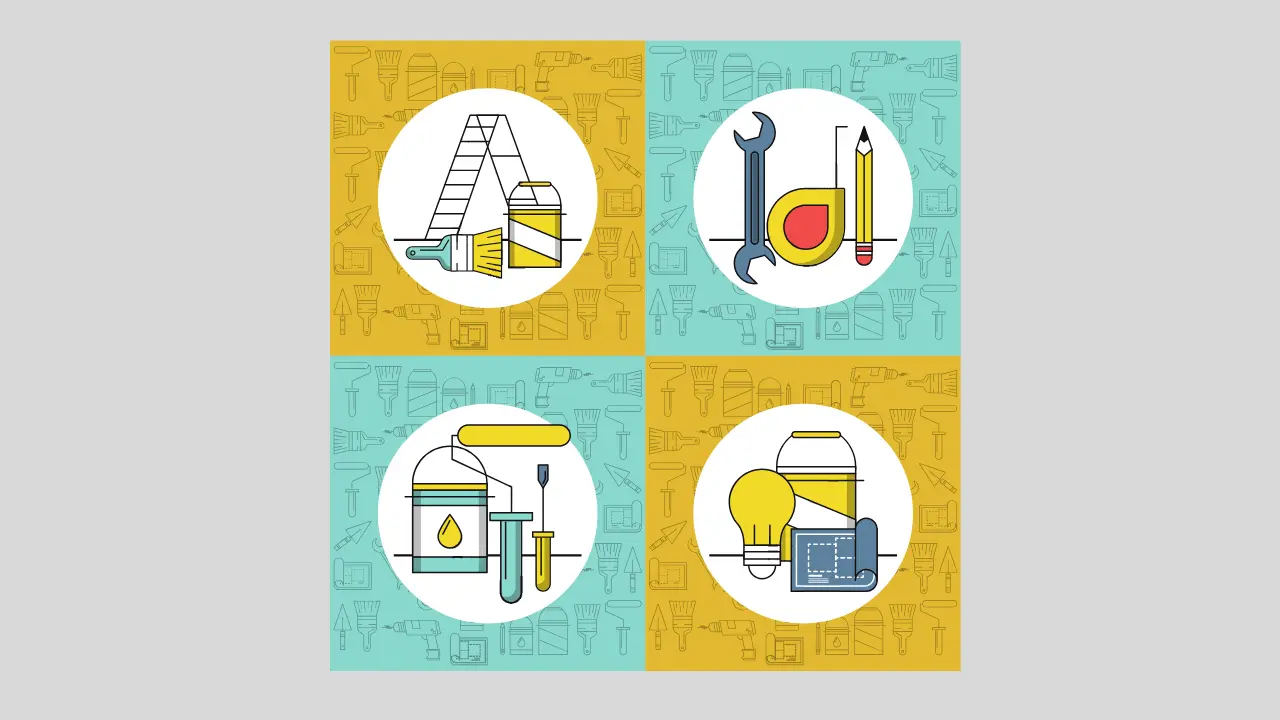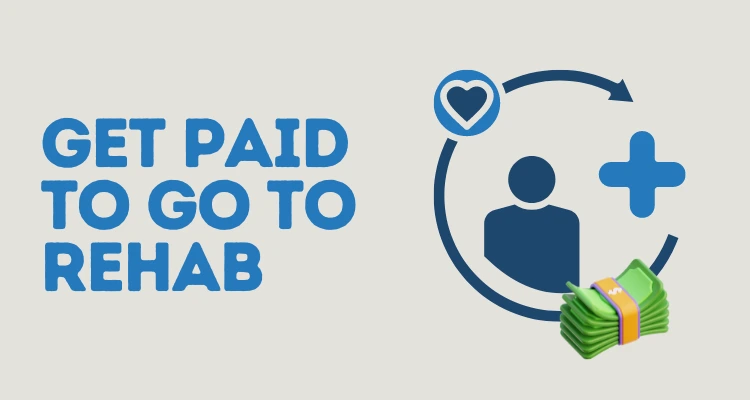Knowing the best niches for affiliate marketing can make all the difference between success and failure.
Did you know that 81.2% of affiliate marketers earn over $20,000 annually?

Affiliate marketing is a fantastic way to earn money online. But not all niches are created equal. So, what exactly are the best niches for affiliate marketing in 2024?
In this guide, we’ll walk you through the best niches for affiliate marketing. We’ll show you how to find a profitable niche and provide tips to help you succeed. We’ll also guide you on how to get started with affiliate marketing. Whether you’re a beginner or aiming to increase your earnings, this guide has something for everyone.
1. Best Niches for Affiliate Marketing – Setting the Foundation
1.1 What is Affiliate Marketing?
Affiliate marketing is a simple concept. You promote other people’s products and earn a commission for every sale made through your referral link. It’s like being a salesperson, but you work online. You don’t need to create your own products or handle customer service. Instead, you focus on marketing and driving traffic to the seller’s website.
For example, let’s say you have a blog about travel. You could join an affiliate program for a travel gear company. When someone clicks on your affiliate link and buys a travel backpack, you earn a percentage of the sale. It’s a win-win situation: the company gets more customers, and you earn money for your efforts.
Definition of a Niche in Affiliate Marketing
A niche in affiliate marketing is a specific segment of a broader market. It focuses on a particular group of people with shared interests or needs. Instead of trying to reach everyone, you target a specific audience. This makes your marketing efforts more effective.
For example, think about the broad market of fitness. It’s huge and includes everything from gyms to workout clothes. A niche within this market could be yoga for beginners. This niche targets people who are new to yoga and looking for beginner-friendly products and information. By focusing on this specific group, you can create content that speaks directly to their needs and interests.
Importance of Selecting the Right Niche
Choosing the right niche is crucial in affiliate marketing. It determines your audience, your content, and ultimately your success. A good niche should be something you’re passionate about. It should also have a large audience and high demand for products.
Why is this so important? Imagine trying to sell winter coats to people living in tropical climates. It wouldn’t work well, right? The same goes for affiliate marketing. You need to target the right audience with the right products.
Choosing the right niche for affiliate marketing helps you stand out in a crowded market and connect with your audience. It also sets you up for higher earnings and more satisfied customers.
To break this down further, see it in this light as to why it is important;
- Relevance: When your niche matches your audience’s interests, they’re more likely to engage with your content. This leads to higher click-through rates and more sales.
- Less Competition: A well-defined niche often has less competition than broader markets. This makes it easier to rank on search engines and attract visitors to your site.
- Expertise: Focusing on a specific niche allows you to become an expert. People trust experts, so they’ll be more likely to follow your recommendations and buy through your affiliate links.
- Targeted Marketing: With a clear niche, you can create highly targeted content and marketing campaigns. This improves your conversion rates and boosts your earnings.
Criteria for Choosing the Best Niche
Selecting the best niches for affiliate marketing requires careful consideration. Here are some criteria to help you choose:
- Passion and Interest: Pick a niche you’re passionate about. When you enjoy your topic, creating content and staying motivated becomes easier. Your enthusiasm will shine through and attract like-minded people.
- Market Demand: Ensure there’s a demand for the products or services in your niche. Use tools like Google Trends or keyword research tools to check if people are searching for these topics.
- Profitability: Consider the potential earnings in your niche. Look for niches with high-paying affiliate programs. Check the average commission rates and the price of the products you’ll promote.
- Audience Size: Make sure your niche has a large enough audience. A niche that’s too small may limit your growth potential. Aim for a balance between a specific focus and a broad enough audience to generate traffic.
- Competition: Analyze the competition in your chosen niche. Too much competition can make it hard to stand out. However, some competition is good as it indicates a profitable market. Look for gaps or underserved segments within competitive niches.
- Evergreen vs. Trending: Decide if you want to focus on an evergreen niche or a trending one. Evergreen niches like health or finance have consistent demand. Trending niches can be profitable but may have a shorter lifespan.
You may want to check out How to Start a Niche Blog
1.2 Evergreen vs. Trending Niches
When deciding on the best niches for affiliate marketing, it’s important to understand the distinctions between evergreen niches and trending niches. Each type has unique characteristics that can significantly impact your affiliate marketing strategy, audience engagement, and long-term profitability. Here’s a detailed comparison:
Evergreen Niches for Affiliate Marketing
Evergreen niches are those with consistent demand over time. Popular examples include health, finance, education, personal development, and home improvement.
Advantages:
- Sustained Traffic: Evergreen content attracts visitors continuously because the information remains relevant year-round.
- SEO Benefits: Search engines favor websites with high-quality, consistent content. Focusing on evergreen topics can improve your site’s search engine ranking over time.
- Reliable Monetization: The stability of evergreen niches allows for various monetization strategies, such as affiliate marketing, sponsored content, and ad revenue.
- Content Longevity: Evergreen content can be updated and repurposed, extending its lifespan and reach.
Challenges:
- High Competition: Evergreen niches often have significant competition, making it challenging to differentiate your content.
- Initial Investment: Building authority in an evergreen niche requires consistent effort and the production of high-quality content.
- Depth of Content: To attract and retain an audience, content must be comprehensive and insightful, which can be resource-intensive.
Trending Niches for Affiliate Marketing
Trending niches experience surges in popularity due to current events, technological advancements, or cultural shifts. Examples include cryptocurrency, viral internet challenges, and new tech gadgets.
Advantages:
- Rapid Traffic Growth: Trending topics can lead to quick spikes in traffic as people search for the latest information.
- High Engagement: Audiences are often highly engaged with trending topics, leading to increased interaction and social sharing.
- Early Market Positioning: Being among the first to cover a trending topic can establish you as a leader or early adopter, boosting your credibility.
Challenges:
- Short Lifespan: Trends can fade quickly, leading to a rapid decline in traffic and interest.
- Unpredictability: The volatile nature of trends makes long-term planning difficult.
- Continuous Monitoring: Keeping up with trends requires constant vigilance and quick content production, which can be demanding.
- Inconsistent Monetization: Monetization opportunities can be erratic, as trends may not last long enough to develop sustainable revenue streams.
2. Best Niches for Affiliate Marketing
Here, we’ll explore the 15 best niches;
2.1 Health and Wellness

The health and wellness niche is one of the best niches for affiliate marketing. It covers a wide range of topics, from fitness and nutrition to mental health and beauty. People are always looking for ways to improve their health and well-being, making this a profitable niche.
2.1.1 Examples of Products/Services
In the health and wellness niche, you can promote various products and services. Here are some examples:
Fitness Equipment:
- Dumbbells
- Resistance bands
- Yoga mats
- Home gym machines
- Treadmills
- Exercise bikes
- Foam rollers
- Kettlebells
- TRX suspension trainers
Supplements:
- Vitamins
- Protein powders
- Herbal supplements
- Pre-workout supplements
- Post-workout recovery drinks
- Omega-3 capsules
- Probiotics
- Multivitamins
Healthy Food and Drinks:
- Organic snacks
- Meal delivery services
- Detox teas
- Gluten-free products
- Vegan and vegetarian meal kits
- Cold-pressed juices
- Superfoods (e.g., chia seeds, spirulina)
- Energy bars
Mental Health Resources:
- Online therapy services
- Meditation apps
- Stress-relief products
- Journaling tools
- Self-help books
- Sleep aids (e.g., white noise machines)
- Mindfulness courses
- Relaxation techniques guides
Beauty and Skincare:
- Natural skincare products
- Anti-ageing creams
- Beauty Gadgets
- Organic makeup
- Haircare products
- Facial rollers and massagers
- Essential oils and diffusers
- Sunscreen products
Wearable Health Technology:
- Fitness trackers
- Smartwatches
- Heart rate monitors
- Sleep trackers
- Posture correctors
- Blood pressure monitors
Home and Lifestyle:
- Air purifiers
- Water filters
- Ergonomic furniture
- Weighted blankets
- Aromatherapy diffusers
- Yoga and meditation accessories
Outdoor and Adventure Gear:
- Hiking boots
- Camping gear
- Hydration packs
- Outdoor clothing
- Bicycles and accessories
- Paddleboards and kayaks
Children and Family Health:
- Child-friendly vitamins and supplements
- Healthy snacks for kids
- Family fitness programs
- Educational toys for mental development
- Baby monitors
- Family meal planning services
Pet Health and Wellness:
- Natural pet food
- Pet supplements
- Grooming products
- Pet fitness equipment
- Pet health monitoring devices
- Stress-relief products for pets
These products cater to a wide audience, from fitness enthusiasts to people looking to improve their mental health.
2.1.3 Why It’s Profitable
The health and wellness niche is highly profitable for several reasons:
- High Demand: People are always looking to improve their health and well-being. This constant demand means there’s a steady market for health and wellness products.
- Diverse Product Range: The niche offers a wide variety of products and services. This diversity allows you to target different segments of your audience and increase your earning potential.
- High Commission Rates: Many health and wellness products come with high commission rates. For example, fitness equipment and supplements often have generous affiliate programs.
- Recurring Revenue: Some products, like supplements or subscription-based services, offer recurring commissions. This means you can earn money every month from repeat customers.
- Trust and Authority: If you build trust with your audience by providing valuable and accurate health information, they are more likely to follow your recommendations. This trust can lead to higher conversion rates.
2.2 Best Niches for Affiliate Marketing – Personal Finance

Personal finance is also one of the best niches for affiliate marketing. It involves helping people manage their money better, save, invest, and plan for the future. This niche is broad and evergreen, with a consistent demand for quality advice and resources.
2.2.1 Examples of Products/Services
In the personal finance niche, you can promote a variety of products and services. Here are some examples:
- Budgeting Tools: Apps and software that help people track their spending and create budgets.
- Investment Platforms: Online brokers, robo-advisors, and cryptocurrency exchanges.
- Credit Monitoring Services: Tools that help users monitor their credit scores and protect against identity theft.
- Financial Education: Courses, eBooks, and webinars on topics like saving, investing, and debt management.
- Banking Products: High-yield savings accounts, checking accounts, and credit cards with rewards.
- Tax Preparation Services: Software and professional services that assist with filing taxes efficiently and maximizing returns.
- Retirement Planning: Tools and advisory services for planning retirement savings, such as 401(k) plans, IRAs, and annuities.
- Debt Consolidation: Services and tools that help individuals consolidate and manage their debt, including personal loans and balance transfer credit cards.
- Insurance Products: Life, health, auto, and home insurance policies tailored to personal financial needs.
Additional Products/Services:
- Personal Finance Apps: Mobile apps that offer comprehensive financial management, including budgeting, saving, investing, and credit monitoring.
- Mortgage and Loan Services: Mortgage brokers, refinancing options, and personal loan services that offer competitive rates and terms.
- Savings and Investment Plans for Kids: Products like custodial accounts, educational savings accounts, and other financial tools aimed at helping parents save for their children’s future.
- Expense Tracking Tools: Apps and services specifically designed for tracking and categorizing expenses to identify spending patterns.
- Financial Planning Software: Advanced tools for creating and managing long-term financial plans and forecasts.
- Estate Planning Services: Services that help with creating wills, trusts, and other legal documents to ensure financial security for loved ones.
- Cashback and Rewards Programs: Apps and services that offer cashback, discounts, and rewards for everyday purchases.
- Peer-to-Peer Lending Platforms: These are services that connect borrowers with individual lenders and offer alternative lending solutions.
- Small Business Finance Tools: Accounting software, invoicing tools, and funding options designed specifically for small business owners.
These products cater to different aspects of personal finance, from daily money management to long-term investment strategies.
2.2.3 Why It’s Profitable
The personal finance niche is highly profitable for several reasons:
- Universal Need: Everyone needs to manage their money. This universal need ensures a broad audience and consistent demand for personal finance products and services.
- High-Value Transactions: Many financial products, like investment platforms or high-yield savings accounts, involve significant amounts of money. This can lead to higher commissions for affiliates.
- Recurring Revenue: Financial products often come with recurring fees or subscriptions. For example, credit monitoring services or premium budgeting tools can provide ongoing commissions.
- Trust and Authority: Building trust is crucial in personal finance. If you offer reliable and helpful advice, your audience is more likely to follow your recommendations and use your affiliate links.
- Diverse Audience: The personal finance niche includes a wide range of sub-niches, from saving for college to planning for retirement. This diversity allows you to target different segments of the audience and tailor your content accordingly.
2.3 Technology and Gadgets

Technology and gadgets are one of the best niches for affiliate marketing. It involves promoting the latest tech products and accessories. This niche is constantly evolving, with new innovations and products being released regularly.
2.3.1 Examples of Products/Services
In the technology and gadgets niche, you can promote a wide range of products and services. Here are some examples:
- Smartphones and Accessories: The latest smartphones, cases, screen protectors, and chargers.
- Laptops and Computers: High-performance laptops, desktops, and peripherals like keyboards and mice.
- Wearable Tech: Smartwatches, fitness trackers, and smart glasses.
- Home Automation: Smart home devices like voice assistants, smart lights, and security systems.
- Gaming Gear: Gaming consoles, controllers, VR headsets, and gaming PCs.
- Audio Equipment: High-quality headphones, earphones, Bluetooth speakers, and soundbars.
- Photography and Videography: Digital cameras, action cameras, drones, tripods, and lighting equipment.
- Networking Devices: Routers, modems, mesh Wi-Fi systems, and network extenders.
- Health Tech: Smart scales, digital thermometers, blood pressure monitors, and health apps.
- E-Readers and Tablets: E-readers, tablets, styluses, and protective cases.
- Portable Power: Power banks, portable chargers, and solar chargers.
- Tech Subscription Services: Cloud storage, VPN services, and software subscriptions.
- PC Components: Graphics cards, processors, RAM, and cooling systems.
- Smart Appliances: Smart refrigerators, ovens, washing machines, and vacuum cleaners.
- 3D Printing: 3D printers, filaments, and 3D printing services.
- Office Tech: Printers, scanners, projectors, and ergonomic office chairs.
- Educational Tech: Coding kits, educational tablets, and e-learning platforms.
- Vehicle Tech: Dash cams, GPS devices, and smart car accessories.
- Eco-Friendly Tech: Solar-powered gadgets, energy-efficient devices, and recycling tech.
- Tech Support Services: IT support, device repair services, and tech setup assistance.
These products appeal to tech enthusiasts, gamers, and anyone looking to upgrade their tech setup.
2.3.2 Why It’s Profitable
The technology and gadgets niche is highly profitable for several reasons:
- High Demand: People love staying updated with the latest tech. There is always a strong demand for new gadgets and accessories, making it a lucrative niche.
- High Ticket Items: Many tech products, like laptops and smartphones, are high-ticket items. This means higher commission rates for affiliates.
- Frequent Upgrades: Technology evolves rapidly. People often upgrade their gadgets regularly, leading to repeat purchases. This provides continuous earning opportunities.
- Wide Audience: The tech niche attracts a broad audience, from casual users to hardcore tech enthusiasts. This allows you to target various segments and increase your reach.
- Affiliate Programs: Many tech companies offer attractive affiliate programs. They provide good commission rates, promotional materials, and support to help you succeed.
- Evergreen Content: While the tech industry moves fast, many products have a lasting impact. Reviews, how-to guides, and comparison articles can generate traffic and income long after they’re published.
2.4 Lifestyle and Hobbies

The lifestyle and hobbies niche is part of the best niches for affiliate marketing. This niche covers a wide range of interests and activities that people are passionate about. From cooking and gardening to travel and DIY crafts, this niche has something for everyone.
2.4.1 Examples of Products/Services
In the lifestyle and hobbies niche, you can promote a variety of products and services. Here are some examples:
Cooking and Baking
- Kitchen Gadgets
- cookbooks
- meal delivery services.
Travel
- Luggage,
- travel accessories,
- booking services for flights and hotels.
Gardening
- Tools,
- seeds,
- gardening kits.
DIY and Crafts
- Craft Supplies
- tools,
- DIY project kits.
Fashion and Beauty
- Clothing
- accessories
- beauty products.
Fitness and Wellness:
- Home gym equipment, fitness trackers, and workout programs.
- Yoga mats, resistance bands, and meditation apps.
- Supplements, protein powders, and health foods.
Technology and Gadgets:
- Smart home devices, wearable tech, and gadgets.
- Phone accessories, chargers, and smartwatches.
- Drones, action cameras, and virtual reality headsets.
Outdoor and Adventure:
- Camping gear, hiking boots, and outdoor apparel.
- Bicycles, skateboards, and electric scooters.
- Fishing equipment, kayaks, and paddleboards.
Pet Care:
- Pet food, toys, and grooming supplies.
- Pet training services, pet sitting, and veterinary services.
- Pet apparel, carriers, and beds.
Home Decor:
- Furniture, lighting, and home textiles.
- Art prints, wall decals, and decorative items.
- Home improvement tools, paints, and DIY kits.
Music and Entertainment:
- Musical instruments, sheet music, and instructional books.
- Concert tickets, streaming services, and audio equipment.
- Board games, puzzles, and video games.
Automotive:
- Car accessories, maintenance tools, and cleaning products.
- GPS systems, dash cams, and car audio systems.
- Car rental services, auto insurance, and ride-sharing services.
Education and Learning:
- Online courses, e-books, and educational apps.
- Stationery, planners, and organizational tools.
- Language learning software, musical instruments, and hobby classes.
Health and Personal Care:
- Skincare products, bath and body items, and wellness retreats.
- Fitness memberships, online workout subscriptions, and nutrition plans.
- Vitamins, health supplements, and ergonomic furniture.
Books and Literature:
- Novels, non-fiction books, and audiobooks.
- Book subscriptions, e-readers, and literary merchandise.
- Writing workshops, book clubs, and literary events.
These products cater to different hobbies and interests, making it easy to find something that resonates with your audience.
2.4.2 Why It’s Profitable
The lifestyle and hobbies niche is highly profitable for several reasons:
- Passionate Audience: People are deeply passionate about their hobbies and lifestyle choices. This passion translates into a willingness to spend money on related products and services.
- Diverse Product Range: The niche offers a wide variety of products. This diversity allows you to cater to different interests and increase your potential earnings.
- Seasonal Trends: Many hobbies and lifestyle products are influenced by seasonal trends. For example, gardening products are popular in the spring, while travel gear sees a spike during vacation seasons. These trends can lead to increased sales during certain times of the year.
- Recurring Purchases: Many lifestyle products, like fashion items or beauty products, are purchased repeatedly. This provides continuous earning opportunities.
- Engaged Community: Hobbyists often form engaged communities, whether online or offline. By becoming a part of these communities and sharing valuable content, you can build trust and drive sales through your affiliate links.
- Visual Appeal: Lifestyle and hobbies often involve visually appealing content. High-quality photos and videos can attract and engage your audience, making them more likely to click on your affiliate links.
2.5 Best Niches for Affiliate Marketing – Education and Online Learning

Education and online learning is one of the best niches for affiliate marketing. This niche focuses on providing educational resources, courses, and tools to help people learn new skills or improve their knowledge. With the growing trend of online education, this niche is expanding rapidly.
2.5.1 Examples of Products/Services
In the education and online learning niche, you can promote a variety of products and services. Here are some examples:
- Online Courses: Platforms like Alison, Udemy Coursera, and Skillshare offer courses on a wide range of topics, from coding and graphic design to cooking and photography.
- Educational Software: Tools like language learning apps (e.g., Duolingo), math tutoring apps, and study aids.
- E-books and Study Guides: Digital books and guides that help people prepare for exams or learn new subjects.
- Webinars and Workshops: Live or recorded sessions on various educational topics, offering in-depth knowledge and interactive learning experiences.
- Certification Programs: Professional certifications in fields like IT, business, and healthcare.
Tutoring Services:
- Online tutoring platforms like Chegg Tutors and Wyzant.
- One-on-one tutoring sessions in various subjects, including math, science, and languages.
Educational Subscriptions:
- Magazine and journal subscriptions related to specific fields of study.
- Access to research databases and academic journals.
Learning Management Systems (LMS):
- Platforms like Moodle, Blackboard, and Canvas are used to manage and deliver educational content.
- Corporate training solutions for employee development.
Interactive Learning Tools:
- Virtual labs and simulations for science and engineering education.
- Interactive whiteboards and classroom response systems.
Educational Games and Apps:
- Gamified learning apps for children and adults, like Kahoot! and Quizlet.
- Educational board games and card games that teach various subjects.
Study and Organizational Tools:
- Planner apps, task management software, and note-taking tools like Notion and Evernote.
- Flashcard apps like Anki for efficient studying.
Professional Development Resources:
- Online workshops and courses for career advancement.
- Networking platforms and mentorship programs for professionals.
Open Educational Resources (OER):
- Free educational materials like textbooks, lecture notes, and syllabi.
- Websites offering open-access courses and resources, such as MIT OpenCourseWare.
Educational Podcasts and YouTube Channels:
- Podcasts on various educational topics, from history to science to business.
- YouTube channels that offer educational content and tutorials.
Homeschooling Resources:
- Curriculum packages, lesson plans, and educational materials for homeschooling.
- Online communities and support groups for homeschooling families.
Exam Preparation Services:
- Test prep courses for standardized tests like SAT, GRE, and GMAT.
- Practice tests and study guides tailored to specific exams.
Workbooks and Printables:
- Printable worksheets and activity books for various subjects and age groups.
- Interactive notebooks and journals for hands-on learning.
Virtual Reality (VR) and Augmented Reality (AR) Education:
- VR and AR educational content for immersive learning experiences.
- Platforms that offer virtual field trips and interactive lessons.
Academic Writing Services:
- Services offering assistance with writing essays, research papers, and dissertations.
- Proofreading and editing services for academic writing.
Mentorship and Coaching:
- Personal mentorship programs in fields like business, technology, and the arts.
- Life coaching and career coaching services.
These products cater to students, professionals, and anyone looking to expand their knowledge and skills.
2.5.2 Why It’s Profitable
The education and online learning niche is highly profitable for several reasons:
- High Demand: The demand for online education is growing. People are always looking to learn new skills or improve existing ones, whether for personal growth or career advancement.
- Wide Audience: This niche appeals to a broad audience, including students, professionals, and lifelong learners. The wide range of topics ensures there’s something for everyone.
- Recurring Revenue: Many online learning platforms and tools offer subscription-based models. This means you can earn recurring commissions as long as users remain subscribed.
- High-Value Products: Educational products, especially professional courses and certification programs, often come with higher price tags. This can lead to higher commissions for affiliates.
- Trust and Authority: You can build trust with your audience by providing valuable educational content and resources. This trust makes them more likely to follow your recommendations and purchase through your affiliate links.
- Evergreen Content: Educational content tends to have a long lifespan. Topics like language learning, coding, and exam preparation remain relevant year after year, providing ongoing earning opportunities.
2.6 Home Improvement and DIY

Home improvement and DIY are among the best niches for affiliate marketing. This niche focuses on helping people enhance their living spaces and tackle do-it-yourself projects. With a growing interest in home improvement, this niche offers plenty of opportunities.
2.6.1 Examples of Products/Services
In the home improvement and DIY niche, you can promote a variety of products and services. Here are some examples:
- Tools and Equipment: Power tools, hand tools, and toolkits for various DIY projects.
- Building Materials: Lumber, paint, tiles, and other materials needed for home improvement projects.
- Home Décor: Furniture, lighting, and decorative items that enhance the aesthetic of a home.
- Gardening Supplies: Plants, soil, pots, and gardening tools for outdoor and indoor gardening projects.
- DIY Project Kits: Kits that include all the materials and instructions needed for specific projects, like building furniture or crafting decorations.
Smart Home Devices:
- Smart thermostats, security cameras, and lighting systems.
- Home automation hubs and voice-controlled assistants.
Storage Solutions:
- Shelving units, closet organizers, and storage bins.
- Garage storage systems and overhead racks.
Plumbing Supplies:
- Faucets, showerheads, and sink fixtures.
- Pipes, fittings, and sealants for plumbing repairs and installations.
Electrical Supplies:
- Wiring, outlets, and switches.
- Light fixtures, ceiling fans, and electrical tools.
Flooring:
- Hardwood, laminate, and vinyl flooring.
- Carpeting, rugs, and floor tiles.
Windows and Doors:
- Replacement windows, doors, and hardware.
- Window treatments, blinds, and curtains.
Heating and Cooling:
- HVAC systems, space heaters, and air conditioners.
- Insulation materials and weather stripping.
Paint and Finishes:
- Interior and exterior paints, stains, and varnishes.
- Paintbrushes, rollers, and sprayers.
Safety and Security:
- Home security systems, smoke detectors, and carbon monoxide detectors.
- Safety gear like gloves, goggles, and masks.
Renovation Services:
- Contractors for kitchen and bathroom remodels.
- Handyman services for repairs and small projects.
Outdoor Living:
- Patio furniture, grills, and outdoor kitchens.
- Decking materials, pergolas, and garden sheds.
Home Cleaning and Maintenance:
- Cleaning supplies, vacuum cleaners, and pressure washers.
- Pest control products and air purifiers.
Eco-friendly Products:
- Energy-efficient appliances and solar panels.
- Recycled building materials and sustainable home goods.
Interior Design Services:
- Professional interior design consultations.
- Virtual design services and 3D modeling software.
Custom Cabinetry and Carpentry:
- Custom kitchen cabinets, built-in shelves, and storage solutions.
- Bespoke furniture and woodworking projects.
Wallpaper and Wall Art:
- Peel-and-stick wallpapers, murals, and decals.
- Framed art, posters, and wall hangings.
Hardware and Fasteners:
- Screws, nails, and anchors.
- Cabinet knobs, door handles, and hinges.
Renovation Guides and Books:
- DIY project books, renovation guides, and how-to manuals.
- Online tutorials, webinars, and instructional videos.
These products cater to homeowners, renters, and DIY enthusiasts looking to improve their living spaces.
2.6.2 Market Trends and Profitability
The home improvement and DIY niche is highly profitable for several reasons:
- Increasing Popularity: The popularity of home improvement shows and online DIY tutorials have sparked a growing interest in this niche. People are more willing to take on projects themselves, driving demand for related products and services.
- High-Value Items: Home improvement projects often involve expensive tools and materials. High-ticket items like power tools and furniture can result in higher commissions for affiliates.
- Seasonal Trends: Certain times of the year, like spring and summer, see a spike in home improvement activities. This seasonality can lead to increased sales and higher earnings during peak times.
- Recurring Purchases: Home improvement projects often require multiple purchases over time. For example, someone remodeling their kitchen might buy new tools, materials, and décor items throughout the project.
- Wide Audience: This niche appeals to a broad audience, including homeowners, renters, and DIY enthusiasts. The wide range of projects ensures there’s something for everyone.
- Content Opportunities: Home improvement and DIY projects provide endless content opportunities. Tutorials, product reviews, and project ideas can attract a dedicated audience and drive traffic to your affiliate links.
2.7 Best Niches for Affiliate Marketing – Personal Finance – Pet Care

Actually, I have a dog named Owen. He’s an American Es-kimo, and I understand firsthand how much care and attention pet owners devote to their furry friends. Pet care is one of the best niches for affiliate marketing. This niche focuses on providing products and services that cater to the needs of pets and their owners. With more people treating their pets as family members, the demand for pet care products is continuously growing.
2.7.1 Examples of Products/Services
In the pet care niche, you can promote a variety of products and services. Here are some examples:
- Pet Food: High-quality dog and cat food, specialty diets, and treats.
- Pet Health Products: Supplements, vitamins, flea and tick treatments, and dental care products.
- Pet Accessories: Leashes, collars, beds, carriers, and clothing.
- Pet Toys: Interactive toys, chew toys, and puzzles to keep pets entertained.
- Grooming Supplies: Shampoos, brushes, clippers, and grooming kits.
- Pet Training: Online courses, training books, and behavior modification tools.
Pet Insurance:
- Health insurance plans covering veterinary visits, surgeries, and medications.
- Wellness plans for routine care like vaccinations and check-ups.
Boarding and Daycare:
- Boarding facilities and pet hotels.
- Daycare services offering supervised play and socialization.
Sitting and Walking:
- Professional pet sitting services for when owners are away.
- Dog walking services providing regular exercise.
Travel Products:
- Travel crates, car seat covers, and pet-friendly carriers.
- Portable water bowls, travel beds, and pet passports.
Identification:
- Microchipping services for permanent identification.
- Personalized ID tags and GPS tracking collars.
Pet Fencing and Containment:
- Invisible fencing systems and outdoor containment solutions.
- Indoor pet gates and playpens.
Pet-Friendly Furniture:
- Furniture designed to accommodate pets, such as pet sofas and beds.
- Scratch-resistant and easy-to-clean home furnishings.
Pet Subscription Boxes:
- Monthly boxes with a variety of toys, treats, and accessories.
- Subscription services for specific diets or themed boxes.
Pet Supplies:
- Specialized food and habitats for reptiles, birds, and small mammals.
- Heat lamps, cages, and unique accessories.
Aquatic Pet Supplies:
- Fish tanks, aquarium decorations, and water conditioners.
- Fish food, filtration systems, and maintenance tools.
Photography and Art:
- Professional pet photography services.
- Custom pet portraits and artwork.
Memorial Products:
- Urns, memorial jewelry, and keepsakes for pet loss.
- Pet memorial services and personalized tributes.
Adoption and Rescue:
- Services promoting pet adoption and fostering.
- Support for rescue organizations and shelters.
Events and Social Groups:
- Pet expos, shows, and meetups.
- Social groups and networks for pet owners.
Wellness and Spa Services:
- Pet massage, acupuncture, and holistic treatments.
- Pet spa services offering baths, grooming, and pampering.
Pet-Friendly Home Services:
- In-home pet grooming and veterinary visits.
- Mobile pet care services for convenience.
Pet Behavior and Enrichment:
- Enrichment activities and puzzle feeders.
- Behavioral consulting and therapy services.
These products cater to various pet types, including dogs, cats, birds, fish, and small mammals.
2.7.2 Market Trends and Profitability
The pet care niche is highly profitable for several reasons:
- Growing Pet Ownership: More people are becoming pet owners, leading to increased demand for pet care products. Pets are considered family members, and owners are willing to spend on their well-being.
- High Expenditure: Pet owners often spend significant amounts on their pets, including premium food, health products, and accessories. This willingness to invest in their pets’ health and happiness drives sales.
- Recurring Purchases: Pet care products like food, supplements, and grooming supplies need regular replenishment. This leads to recurring purchases, providing consistent revenue opportunities for affiliates.
- Diverse Product Range: The pet care market offers a wide variety of products, allowing affiliates to cater to different pet owners’ needs. This diversity increases the potential for sales.
- Seasonal Trends: At certain times of the year, like holidays or pet adoption seasons, spikes in pet product purchases are seen. These trends can lead to increased sales during specific periods.
- Emotional Connection: Pet owners have a strong emotional connection with their pets. This bond makes them more likely to purchase products that promise to enhance their pets’ well-being.
2.8 Sustainable and Eco-Friendly Products

Sustainable and eco-friendly products are among the best niches for affiliate marketing. This niche focuses on promoting products that are environmentally friendly and sustainable. As awareness of environmental issues grows, more people are looking to make eco-conscious choices.
2.8.1 Examples of Products/Services
In the sustainable and eco-friendly products niche, you can promote a variety of products and services. Here are some examples:
- Reusable Products: Reusable shopping bags, water bottles, and coffee cups.
- Eco-Friendly Household Items: Biodegradable cleaning products, bamboo toothbrushes, and compostable kitchenware.
- Sustainable Fashion: Clothing made from organic cotton, recycled materials, or ethically sourced fabrics.
- Green Energy Solutions: Solar panels, wind turbines, and energy-efficient appliances.
- Organic and Natural Beauty Products: Skincare, haircare, and cosmetics made from natural ingredients without harmful chemicals.
- Zero-Waste Products: Products designed to reduce waste, like beeswax wraps, metal straws, and refillable containers.
These products cater to consumers who are committed to reducing their environmental impact.
2.8.3 Market Trends and Profitability
The sustainable and eco-friendly products niche is highly profitable for several reasons:
- Growing Awareness: Environmental awareness is on the rise. More people are becoming conscious of their ecological footprint and are seeking sustainable alternatives.
- High Demand: The demand for eco-friendly products is increasing. Consumers are willing to pay a premium for products that are better for the environment.
- Diverse Product Range: This niche offers a wide range of products, allowing affiliates to target different aspects of sustainability. From everyday items to larger investments like solar panels, there are numerous opportunities.
- Brand Loyalty: Consumers who commit to sustainable living often become loyal to brands that align with their values. This loyalty can lead to repeat purchases and long-term customer relationships.
- Positive Impact: Promoting eco-friendly products not only helps generate income but also contributes to positive environmental change. This can enhance your brand’s reputation and attract a dedicated audience.
- Government Incentives: In some regions, governments offer incentives for using sustainable products, like tax credits for solar panels or energy-efficient appliances. These incentives can drive more consumers towards eco-friendly choices.
3.5 How to Stay Ahead of the Curve
To stay competitive and find the best niches for affiliate marketing, consider these strategies:
- Follow Industry News: Stay updated with industry news and trends. Subscribe to newsletters, follow blogs, and join forums related to affiliate marketing. This helps you identify emerging trends early. Websites like Affiliate Summit or Income School provide insights into trends and tips for marketers.
- Analyze Competitors: Regularly check what successful competitors are doing. Analyze their content, social media strategies, and the products they promote. This can provide valuable insights into what works. Use tools like SEMrush to see which keywords competitors rank for and adapt your content strategy accordingly.
- Test New Strategies: Don’t be afraid to experiment with new types of content or marketing strategies. Try different platforms like TikTok or Pinterest, or explore new content formats like videos or podcasts. If you typically write blog posts, try creating a YouTube channel where you discuss products and provide tutorials. This can attract a new audience.
Best Niches for Affiliate Marketing – Concluding Thought
In conclusion, finding the best niches for affiliate marketing is essential for your success as an affiliate marketer. By understanding what a niche is and why it’s important, you can make informed decisions that align with your interests and market demand. We’ve covered various criteria for choosing a niche, including passion, market demand, competition, and long-term potential.
The top profitable niches such as Health and Wellness, Personal Finance, Technology and Gadgets, Lifestyle and Hobbies, and Education and Online Learning offer numerous opportunities. By conducting thorough keyword research and analyzing market trends, you can validate your niche and ensure its profitability.
Remember, the key to success is consistent effort and adapting to market changes. Good luck with your affiliate marketing endeavors!
What niche are you thinking of diving into? Share your thoughts or ask questions below—let’s discuss how you can find your path to affiliate marketing success!
Additional Resources:
- Is Affiliate Marketing Legit? The Straight Answer
- How to Start a Blog and Make Money: Ultimate Guide
- Blog Niche Ideas For 2024
- Vlog vs Blog: Which is Better?
- SEO Secrets For Better Ranking
- Best Blogging Platform To Make Money: Top 15 Choices
- Best Niche for Blogging: Expert Picks
Best Niches for Affiliate Marketing – FAQ
1. What is the best niche for affiliate marketing?
The best niche for affiliate marketing depends on your interests, market demand, competition, and long-term potential. Popular niches include Health and Wellness, Personal Finance, Technology and Gadgets, Lifestyle and Hobbies, and Education and Online Learning.
2. How do I choose the right niche for affiliate marketing?
Choose a niche based on your passion, market demand, competition analysis, and long-term potential. Conduct keyword research and analyze market trends to validate your niche.
3. Why is it important to choose a niche in affiliate marketing?
Choosing a niche helps you target a specific audience, making your marketing efforts more effective. It also allows you to establish yourself as an expert in that area, which can build trust and drive more sales.
4. How can I stay updated on emerging trends in affiliate marketing?
Stay updated on emerging trends by following industry blogs, subscribing to newsletters, using tools like Google Trends, and engaging with affiliate marketing communities.
5. What are some tools for researching and validating a niche?
Tools like Google Trends, SEMrush, and Ahrefs are excellent for keyword research, analyzing market trends, and evaluating competition. These tools can help you validate your niche and ensure its profitability.






